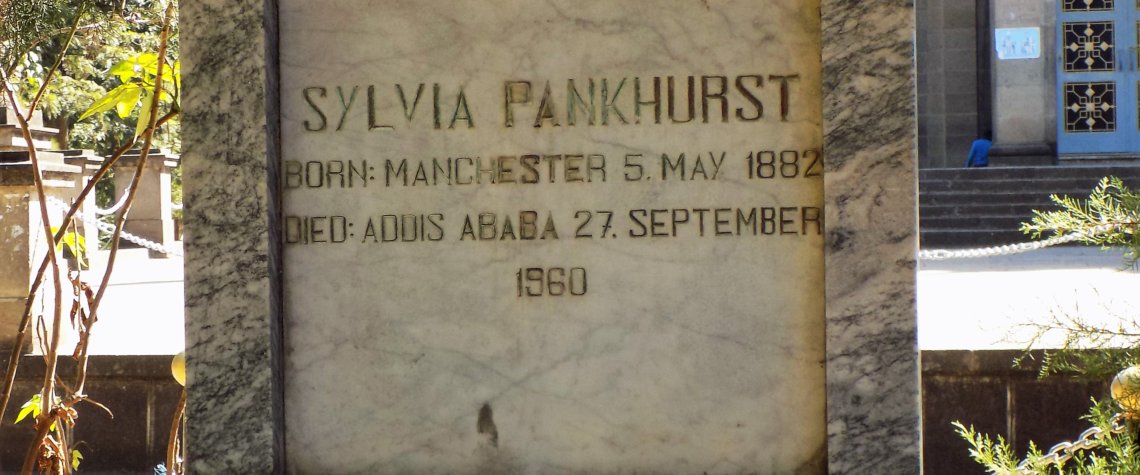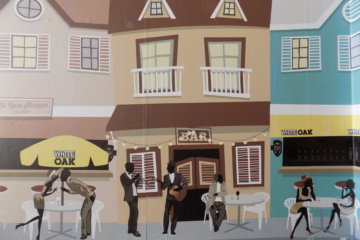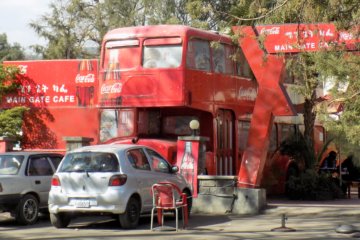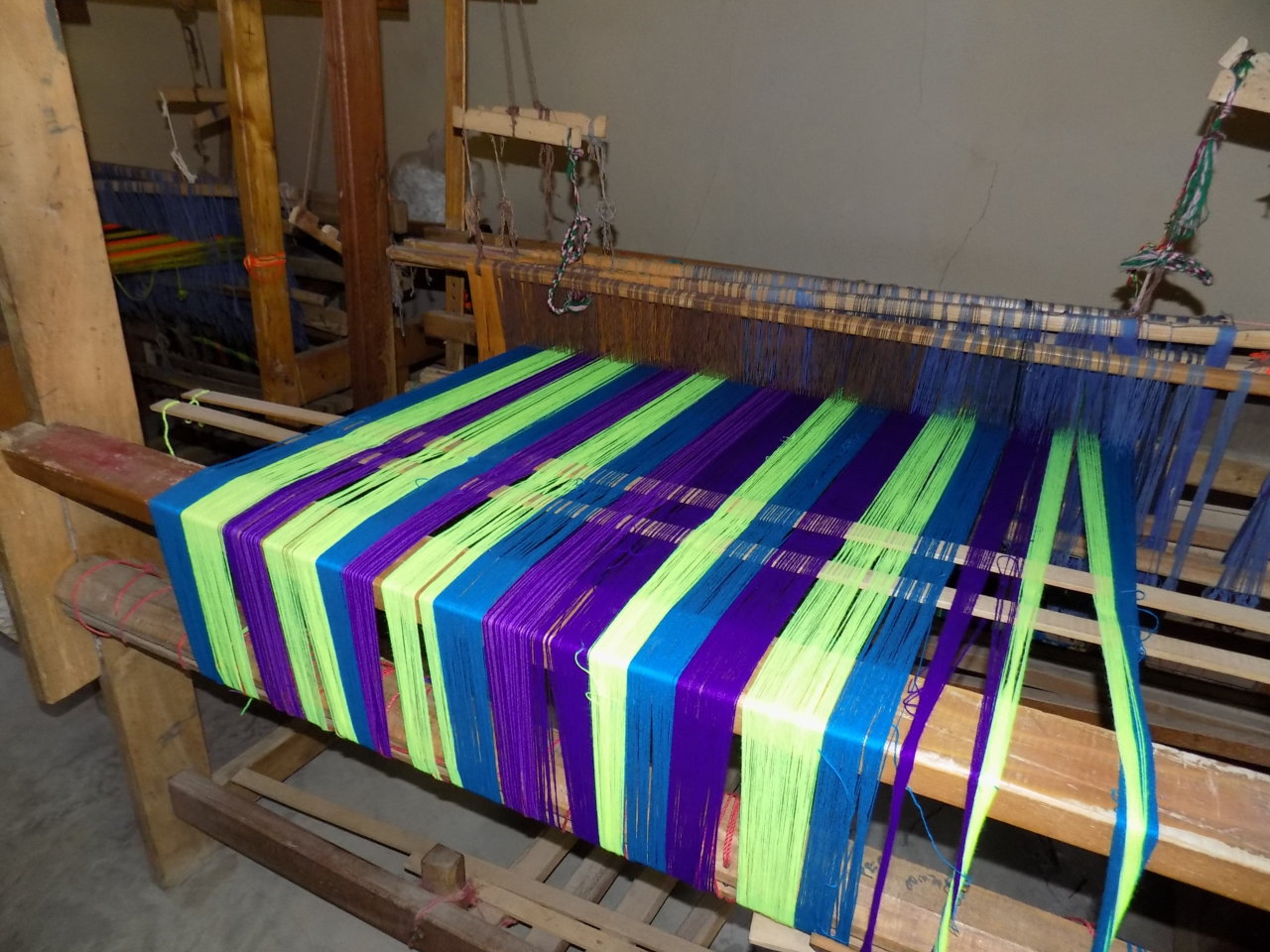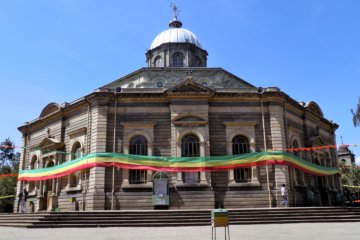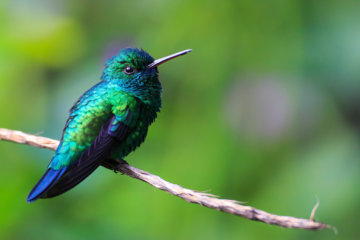This article describes the special and surprising relationship British suffragette, Sylvia Pankhurst, had with the nation of Ethiopia and its people.
In this article
My Introduction to the Pankhursts
Many, many years ago when I was a pupil at Mill Lane Junior School, I learned all about Emmeline Pankhurst, her family and the part they played in the suffrage movement. I was so taken by their efforts and the sacrifices they made and couldn’t wait to reach the age of eighteen so that I could exercise the right to vote that all those women had fought so hard for me to have.
Sylvia Pankhurst
Sylvia’s Early Years
I remember at school feeling a particular admiration for and empathy with Emmeline’s second daughter, Sylvia.
Born in Manchester in 1882, along with her sisters, Christabel and Adela, Sylvia attended Manchester High School for Girls. After leaving school, she trained as an artist at the Manchester School of Art and, in 1900, she won a scholarship to the Royal College of Art in London.
Sylvia, the Suffragette
Sylvia was the driving force behind her mother setting up the Women’s Social and Political Union (WSPU). She used her artistic talents to design the organisation’s logo, as well as leaflets, banners and posters. She toured the industrial towns of England and Scotland painting portraits of women in the workplace.
Arguably not as militant as her mother and more famous sister, Christabel, Sylvia preferred to campaign locally rather than take to the national stage. She was no less passionate about the cause, though, and regularly wrote articles for the WSPU’s newspaper, ‘Votes for Women’. She was repeatedly imprisoned for her protests – more than any other Suffragette – and was often force-fed, experiences she talked about in various publications.
Sylvia later fell out with her mother and sister over the direction the WSPU was taking, particularly the violence and the pro-war message it advocated. She was a pacifist and a vocal promoter of women’s rights, not just for us to have the vote, but also to have access to decent healthcare and childcare.
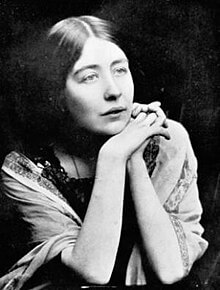
Sylvia Pankhurst in Ethiopia
So, I knew all about Sylvia and her role in the women’s movement, but the first inkling I had that she had any connection with Ethiopia was when I read two lines in my guidebook before our trip saying that she was buried in the grounds of Holy Trinity Cathedral in Addis Ababa. Further reading revealed Sylvia’s long association with the country we were about to visit.
In the 1930s, Sylvia Pankhurst was involved in several anti-Fascist movements and when Mussolini’s Italy invaded Ethiopia in 1935, she responded by writing a series of critical articles and campaigning for an Italian withdrawal. She became a supporter of Haile Selassie and, at his invitation, visited Ethiopia many times. She developed a keen interest in the country’s art and culture, and actively raised funds for Ethiopia’s first teaching hospital. By this time, Sylvia was a friend and adviser to the Ethiopian emperor and followed a consistently anti-British stance. Later, she turned her attention to improving conditions for mothers and babies and fought to open a specialist women’s hospital.
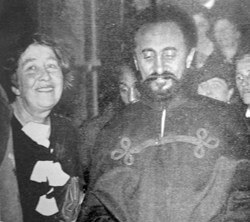
After Sylvia’s life partner, Silvio Corio (she refused to marry him in the thirty years they were together as she didn’t want to take his name), died in 1954, she moved to Ethiopia permanently. She took her son, Richard, with her. Again, this was at the request of Haile Selassie, who provided her with a comfortable home. She founded a monthly journal, ‘New Times and Ethiopia News’, which reported on many aspects of Ethiopian life and development.
When Sylvia herself died in 1960, she was given an Ethiopian state funeral and buried in a place reserved for Ethiopian heroes.
Sylvia’s final resting place
On our second day in Addis Ababa, we visited Sylvia’s grave. It is a very simple, but striking tomb, fashioned in the shape of a book with benches at the sides where people can sit. When we were there, the grave was completely unadorned and I regretted not taking flowers with me as a sign of respect for this woman who had done so much for all women.
Unlike me, our guide, Yuhn, knew all about Sylvia’s contribution to Ethiopia’s story. He was proud to tell me how well thought of she was and how there were streets in Addis which still carried her name. He also told me about how the Pankhurst legacy lives on in Ethiopia through Sylvia’s son Richard (who passed away in Addis in 2017), his Romanian-born wife, Rita, and their son, Alula, who is married to an Ethiopian. I, in turn, was able to tell Yuhn about Sylvia Pankhurst, the Suffragette, about which he had no idea!
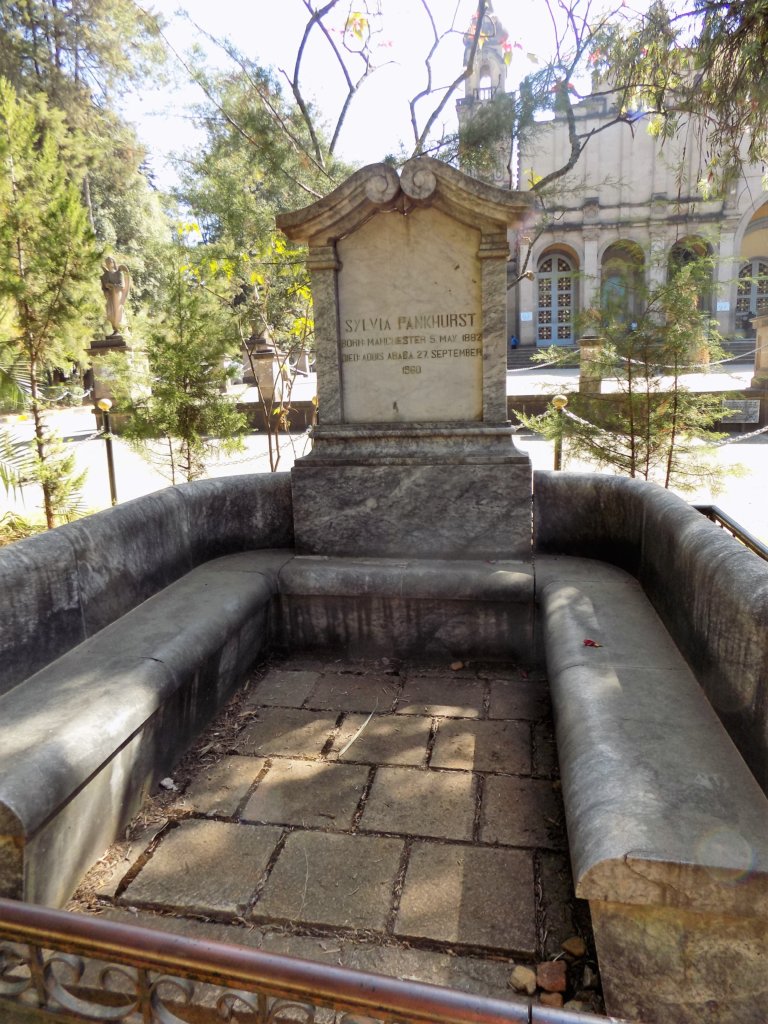
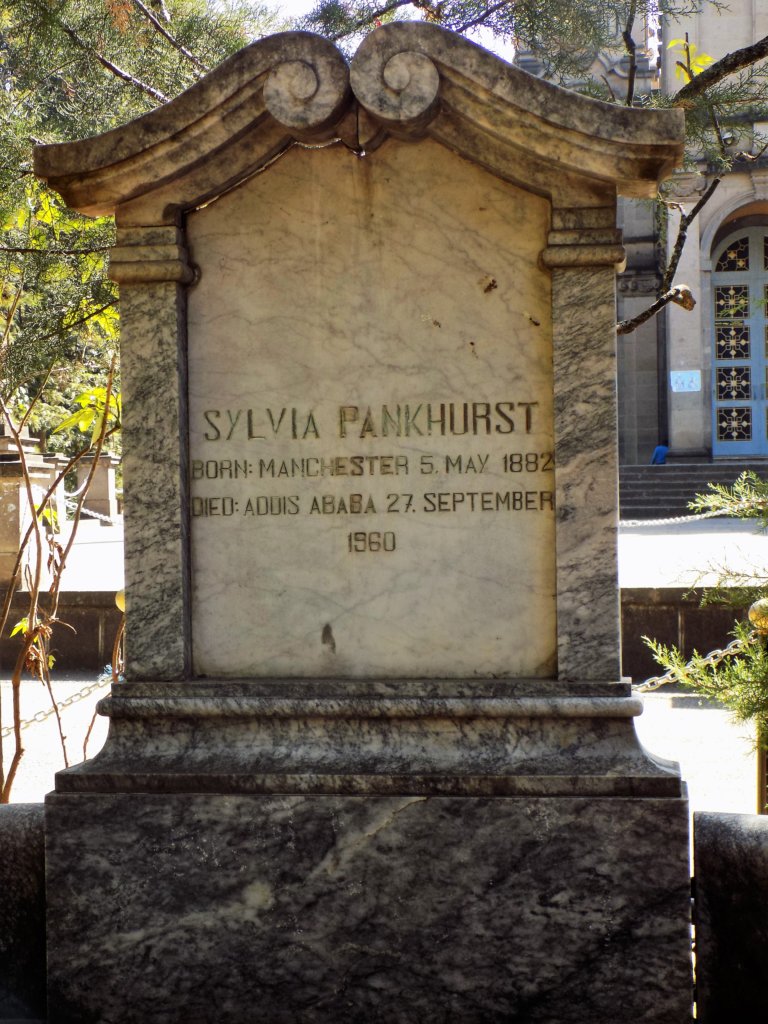
CLICK HERE TO READ MY COMPLETE TRAVEL GUIDE TO ETHIOPIA
Read More about Sylvia Pankhurst
If you like what you’ve read, PIN IT!!
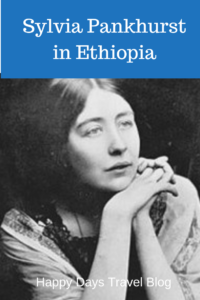
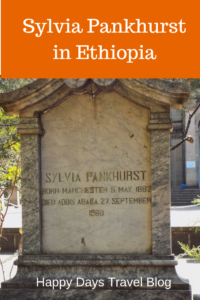
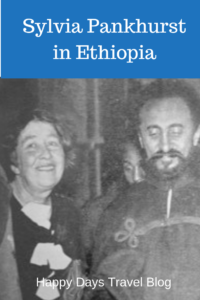
Disclosure: This post contains affiliate links. If you click through for more information, or to make a purchase, it may result in a small commission coming my way. Please note that there is no extra cost to you associated with this. Thank you so much for supporting my site.
Join our mailing list

Sign up to receive our monthly newsletter. Keep up with what we're doing and be the first to receive special offers and insider tips.

